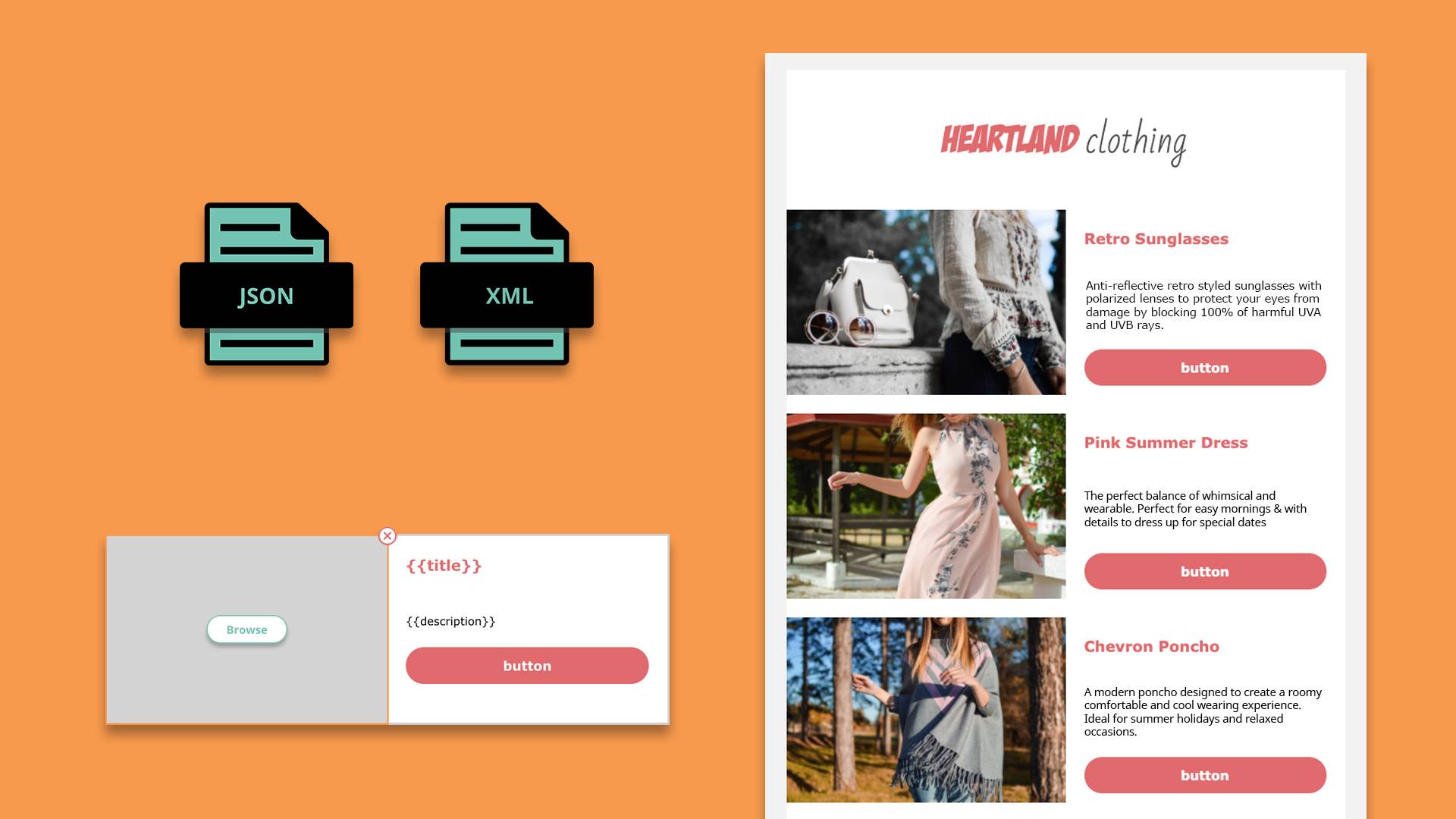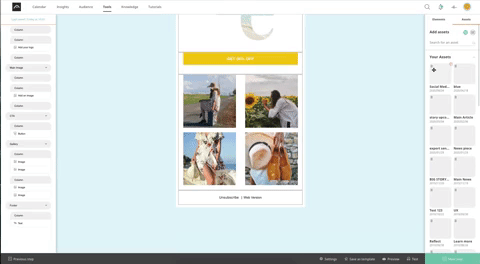Dynamic Assets: How to Automate Content Production in Email Marketing

Brands who want to stay relevant in digital channels need a stream of fresh content. Not least when it comes to email marketing, where customers expect something newsworthy.
But working with content involves some tedious and repetitive tasks. For a marketer, there's little creative reward in adding prices to a product list or updating numbers on a chart. To copy-paste content is not only dull, but it can also be the cause of formatting errors and other mistakes.
So, what if there’s a way to feed content from an external data source into your marketing emails?
Let’s have a closer look at a new feature called Dynamic Assets.
How to work faster and maintain consistency with Assets
Before we dive into Dynamic Assets we need a brief understanding of what Assets are and how to use these in Apsis One. An Asset is a placeholder for content elements such as headlines, body text and images. When working in the Apsis One email editor, you can save whatever combination of content that you create and re-use it as an Asset.

To add an asset to your email, you simply drag it into the editor as seen in the animation above.
But here's the thing.
Assets are static. They help you get the right image sizes and fonts in place, but you will eventually have to add the actual content yourself.
This is where Dynamic Assets come into play.
In essence, Dynamic Assets works the same way as a Static Asset: both assets are placeholders for content that you apply to your email design.
But there's a twist. A Dynamic Asset fetches content (images and text) from an external URL containing an XML or Json file and adds the content to your email. Whenever there's an update to the content in the URL, the content within the email changes too. Hence the name Dynamic.
Adding fresh content to your emails becomes as easy (and rewarding) as a simple drag and drop.
The video below shows how a Dynamic Asset fetches a list of products (Hotels) from an external URL (Json) and adds the content to the email.
The benefits of Dynamic Assets in email marketing
A single source of truth
When promoting products online, marketers rely on getting the correct information from the organisation. Working towards a tight deadline and making sure that prices are up-to-date or product inventory is correct can be a bit of a headache. Dynamic assets make it possible for organisations to remove internal silos and tap into the same source of data.
For instance, if you're an online retailer, you're able to export content from your E-commerce platform and feed it into your emails.
Streamline content production
Brands that produce a lot of content rely on the ability to scale their message to different channels and touchpoints. For instance, many B2B-companies include a newsfeed with their latest articles in their emails. When adding the newsfeed into the email, marketers prefer to copy the original images, headlines and introductions.
Rather than doing a manual copy-paste or scribbling a hasty rewrite, Dynamic Assets instantly put the right content in the right place. Simply export the blog articles to an XML or Json file and watch how the content automatically populates your email. Just like magic.
Automate your workflows
Automation is one of the macro trends in marketing during the last decade. To automate workflows have benefits that go far beyond saving resources. Reducing manual work frees up valuable time to create smarter marketing that generates growth. That’s a big win for all.
Show the right content to the right segments
Marketers should constantly strive to be as specific and relevant to their customers. Just like any other content, a Dynamic Asset can be included or excluded to your customer segments. Maybe you have contact details that not relevant for customers from a certain geographic area. Or maybe you want to promote a discount to those who haven't bought anything in the last month? Find out how to apply segmentation on your Dynamic Assets.
Upcoming features: Check for consent and add a layer of personalisation
Dynamic Assets is a feature that's available for all users of the Email tool in Apsis One. As an upcoming feature, users will be able to automatically fetch consent before sending the email. This feature makes it possible to schedule recurring newsletters with Dynamic Assets in advance, as well as including them in a marketing automation flow. In the future, Dynamic Assets will also include more advanced personalisation features.
Curious to know more about Dynamic Assets? Head over to Knowledge Base to get your questions answered. And if you’re still not using Apsis One, try Dynamic Assets yourself by signing up for our free 14-day trial!


